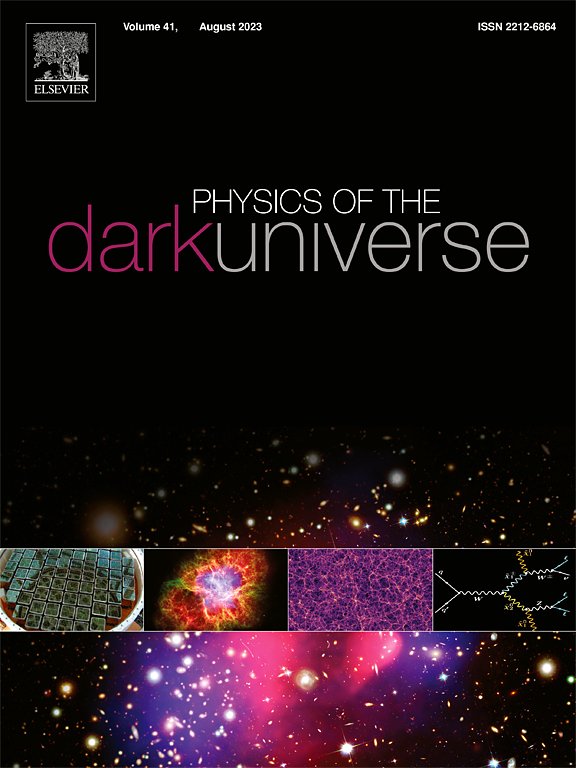The effective phase space and e-folding of the Starobinsky and extended Starobinsky model of inflation
IF 6.4
2区 物理与天体物理
Q1 ASTRONOMY & ASTROPHYSICS
引用次数: 0
Abstract
For zero spatial curvature, cosmological phase space of Starobinsky and extended Starobinsky inflationary model show three apparent attractors; the fixed angle attractor in the large field limit, the final attractor representing reheating phase in the small field region, and the apparent attractor corresponding to the slow-roll condition connecting between the large-field and small-field region. To consider the total -folding likelihood of the model, Remmen–Carroll conserved measure is constructed and normalized. Using the measure, the total e-folding number and its expectation value are calculated. Our results show that most classical slow-roll trajectories which intersect the Planck surface have , and is required for . It is found that for which satisfies the constraint on the spectral index, , the expectation value for trajectories intersecting the Planck surface in the Starobinsky model. For extended Starobinsky model with additional term parametrized by a coupling parameter , the expectation value when inflation starts from the top of the potential shifts to for respectively. In the Starobinsky model even at very large inflaton cutoff where the field value is super-Planckian, the energy density from the (saturating) inflaton potential and the Hubble parameter are still sub-Planckian and therefore the inflation occurs within the semi-classical regime.
Starobinsky和扩展的Starobinsky膨胀模型的有效相空间和电子折叠
当空间曲率为零时,Starobinsky宇宙相空间和扩展的Starobinsky膨胀模型显示出三个明显的吸引子;大场极限的定角吸引子,小场区域的终吸引子代表再加热阶段,视吸引子对应连接大场和小场区域的慢滚状态。为了考虑模型的总电子折叠可能性,构造了Remmen-Carroll守恒测度并进行了归一化。利用该测度,计算了总电子折叠数N及其期望值N。我们的结果表明,与普朗克表面相交的大多数经典慢滚轨迹具有N<;60,而对于N>;60,则需要ϕUV>;5.5MPl∗。在Starobinsky模型中,对于满足谱指数ns=0.9658±0.0040(68%CL)约束的ϕUV∈[5.22,5.50]MPl∗,与Planck曲面相交的轨迹的期望值< N >≃3.5−4。对于由耦合参数α参数化的附加R3项的扩展Starobinsky模型,当α=10−4,6.5×10−5时,暴胀从势的顶部开始时的期望值分别变为N=4.025,4.336。在Starobinsky模型中,即使在非常大的膨胀截止点(即场值为超普朗克的情况下),(饱和)膨胀势的能量密度和哈勃参数仍然是亚普朗克的,因此膨胀发生在半经典状态内。
本文章由计算机程序翻译,如有差异,请以英文原文为准。
求助全文
约1分钟内获得全文
求助全文
来源期刊

Physics of the Dark Universe
ASTRONOMY & ASTROPHYSICS-
CiteScore
9.60
自引率
7.30%
发文量
118
审稿时长
61 days
期刊介绍:
Physics of the Dark Universe is an innovative online-only journal that offers rapid publication of peer-reviewed, original research articles considered of high scientific impact.
The journal is focused on the understanding of Dark Matter, Dark Energy, Early Universe, gravitational waves and neutrinos, covering all theoretical, experimental and phenomenological aspects.
 求助内容:
求助内容: 应助结果提醒方式:
应助结果提醒方式:


